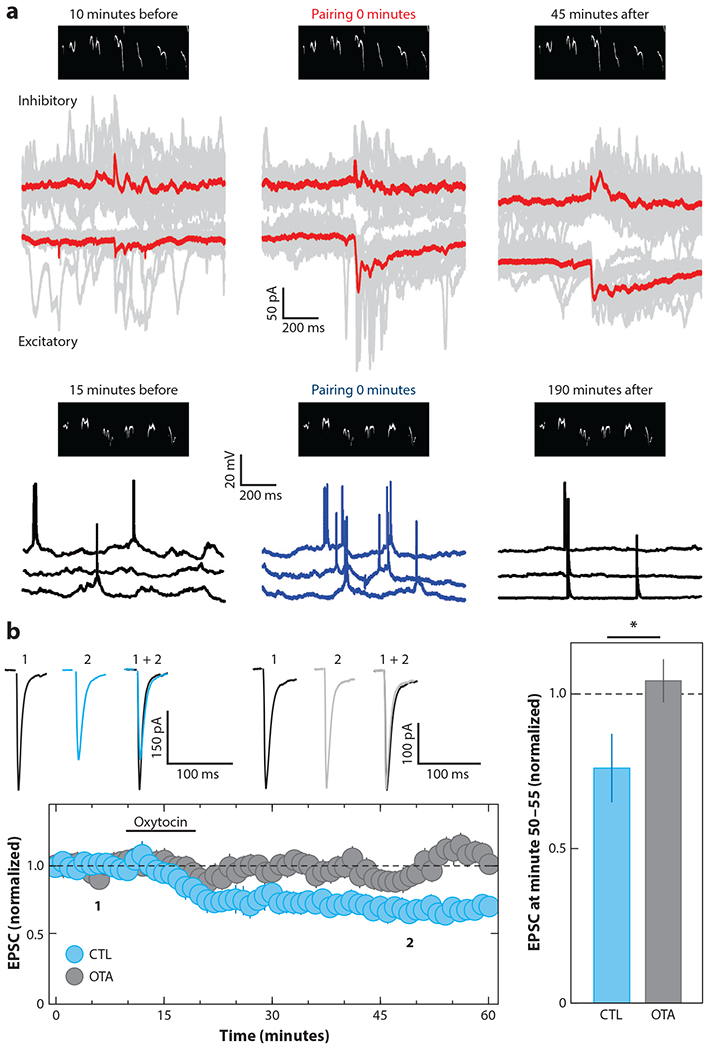Figure 4.

Mechanisms of oxytocin modulation enable long-term plasticity. (a) Long-term plasticity of synaptic and spiking responses to mouse infant distress calls is induced in vivo in female virgin left auditory cortex. (Top) Voltage-clamp recordings from cortical neurons are shown before, during, and after pairing oxytocin (red) with pup call (black spectrogram above traces). Excitatory-inhibitory correlation improved over time, and responses to the pup call became more reliable. (Bottom) Two consecutive current-clamp recordings of spiking responses are shown before, during, and after oxytocin pairing via optogenetic stimulation (blue). After pairing, pup calls evoked more spikes with higher temporal precision (Marlin et al. 2015). (b) Oxytocin induces LTD in vitro in mouse nucleus accumbens (blue) unless slices were preincubated with OTA (black) (Dölen et al. 2013). Abbreviations: CTL, control; EPSC, excitatory postsynaptic current; LTD, long-term depression; OTA, oxytocin receptor antagonist.
